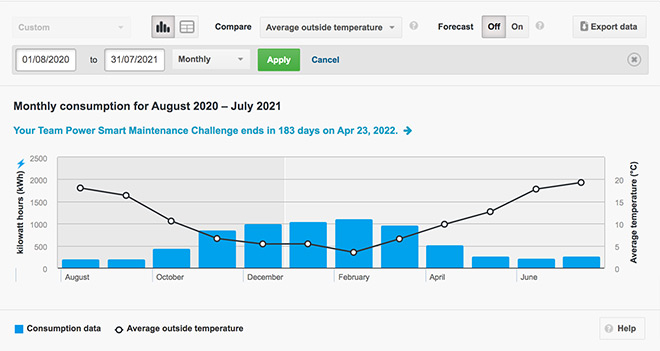Cranking up the heat warms a home faster, and other heating myths debunked

How you use your thermostat, and when/where you heat, adds up
The difference between being smart with electricity and wasting it can mean up to hundreds of dollars a year, especially when it comes to heating your home in the cooler months of the year. The average winter electricity bill in B.C. is 66% higher than it is in the rest of the year, and it's not unusual for those bills to double or triple for some BC Hydro customers.
So as the leaves turn colour and the temperatures dip, it helps to know a few best practices around keeping your home comfortable while avoiding high bills. It also may be time to take advantage of rebates available to switch to a heat pump, which can be up to 300% more efficient than electric baseboard heaters for heating your home.
Here are a few myths around home heating, and why they matter.
Myth No. 1: Cranking up the thermostat heats your home faster
If you have a teenager who has access to a thermostat in their room, you may know this one. When the room gets chilly, they crank up the heat... then forget about it. You open the door and enter the tropics, with your teen – hunched alongside a PlayStation 4 that's now overheated and adding even more hot air to the room – wearing a tee shirt to cool down.
Comfort isn't just about heat. It's about the right heat, and for most of us, that's 20° or 21°C. So that's where you want to set your thermostat, because the science is that rooms don't heat up any faster when you crank the temperature up to 24°C instead of 21°C. It eventually just gets uncomfortably warm, and dramatically increases your heating bills, before you correct the temperature to maximize comfort.
If you have a heat pump, turning the temperature setting down at night or when you're away during the day isn't recommended. This can be a big change if you're used to managing a baseboard heating or gas furnace system. See our tips for using and maintaining a heat pump.
Myth No. 2: Heat pumps are too expensive
While the cost of purchasing and installing a heat pump can vary – depending on the type and your home's characteristics – from around $6,000 to $14,000, rebates are available to help reduce that cost. If you're looking to install a heat pump, it's recommended you get a minimum of three quotes from contractors.
If you currently rely on electric baseboards to heat your home, switching to a heat pump will deliver significant savings in your electricity use – and even more if you currently have central or portable air conditioning as well.
Is your home heated by natural gas, oil or propane? See heat pump rebates for fuel switching.
Myth No. 3: It's smart to keep your rooms warm for when you return home or wake up
This is perhaps the biggest mistake many of us make. The reality is that heating rooms when they're not in use is a tremendous waste of energy. Unless you live in a mansion with huge rooms, an electric baseboard heater will get you comfy within a matter of minutes. And if you have programmable and/or wifi-enabled thermostats, you can schedule them or tweak them to hit optimal temperatures by the time you arrive home or get up in the morning.
Myth No. 4: There's one comfortable temperature that suits everyone
The truth is, we're all a little different. Some studies have shown, for instance, that men tend to like rooms cooler than women do. And even that's inconsistent: the family member cooking dinner or who just returned from a workout is likely going to feel warmer than the person camped out on the couch. So before you get into a thermostat war, consider adopting this rule: the person who feels cold puts on a sweater, hoodie and/or slippers to get more comfy. Try it. It works.
Myth No. 5: If your home is drafty, it makes sense to increase the heat
This doesn't really work. Drafts will still make you uncomfortable (especially your feet). If your home is drafty, check that all doors and windows are tightly closed, and consider draftproofing them if you can feel cold air leaking. Draftproofing is inexpensive and easy to do, and Dave shows you just how it's done, and until November 12, you can save on draftproofing supplies.
Related: